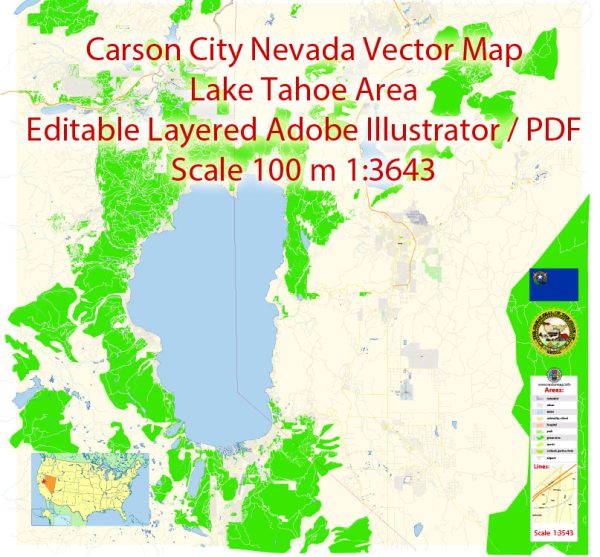Carson City, Nevada, has a rich history of urban development that reflects the state’s overall growth and development. Here’s an overview of its history:
- Early Settlement: Carson City’s history is closely tied to the westward expansion in the United States during the 19th century. The city was first settled by European-Americans in the mid-1800s. It was established as a trading post in the 1850s during the California Gold Rush and was originally named “Carson City” in honor of the famous frontiersman and scout Kit Carson.
- Territorial Capital: In 1861, Carson City became the capital of the Nevada Territory. This was a significant development for the city, as it brought government functions, administration, and growth to the area. This status was maintained when Nevada became a state in 1864.
- The Comstock Lode: The development of nearby mining towns like Virginia City, which was part of the Comstock Lode silver discovery, played a significant role in Carson City’s growth. The influx of wealth and population from the mining industry contributed to the development of infrastructure, including the construction of government buildings, schools, and churches.
- State Capital: When Nevada achieved statehood in 1864, Carson City retained its status as the state capital. The city’s role as the capital has continued to shape its development over the years, with the establishment of government buildings and services.
- Transportation Hub: Carson City became an essential transportation hub in the late 19th century. The arrival of the Virginia & Truckee Railroad connected the city to other major settlements in Nevada, facilitating the movement of people and goods. This had a significant impact on Carson City’s growth and economy.
- 20th Century Growth: In the 20th century, Carson City continued to develop as a government and administrative center for Nevada. The city saw the expansion of government buildings, infrastructure improvements, and the establishment of educational institutions. The state government remains one of the city’s largest employers.
- Contemporary Development: Today, Carson City has evolved into a vibrant community with a mix of government-related services, commerce, tourism, and outdoor recreational opportunities. The city’s historic downtown area features well-preserved buildings, and cultural events and heritage tourism contribute to its identity.
- Preservation Efforts: Carson City has made efforts to preserve its historical and cultural heritage. The city’s historic district contains numerous well-preserved buildings, and it is listed on the National Register of Historic Places. Various museums and cultural institutions showcase the history of the area.
Carson City’s history of urban development is closely tied to the broader historical events and trends in the American West, including mining, westward expansion, and the development of transportation networks. Today, the city continues to evolve while preserving its rich historical legacy.


 Author: Kirill Shrayber, Ph.D.
Author: Kirill Shrayber, Ph.D.